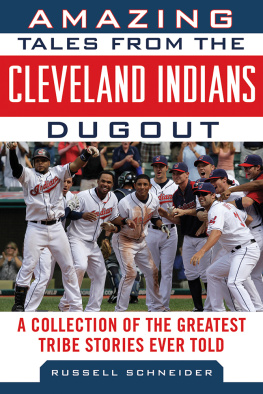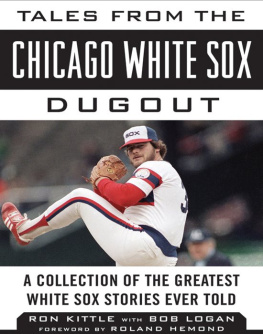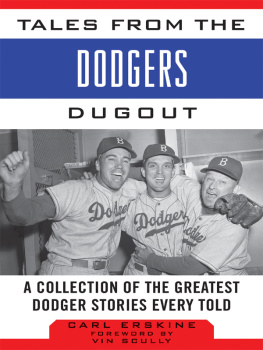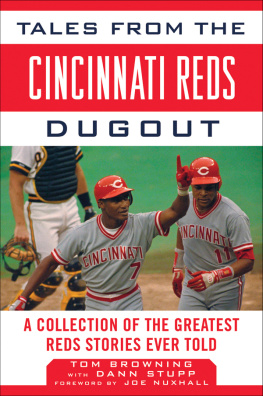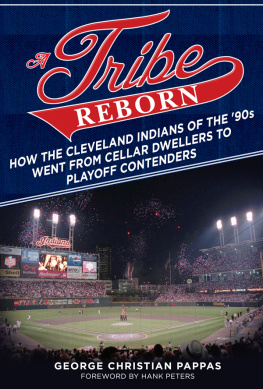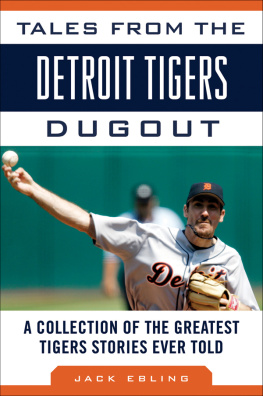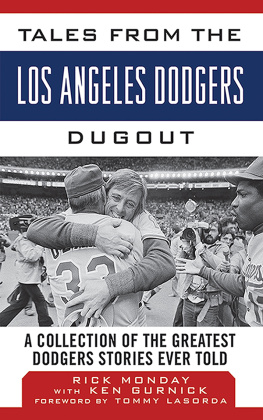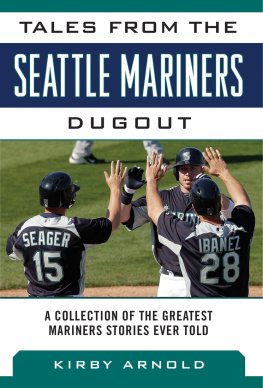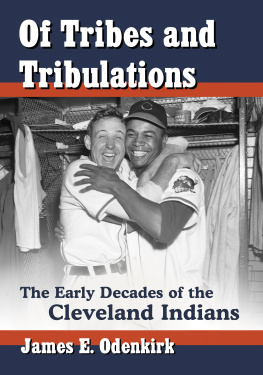AMAZING
TALES FROM THE
CLEVELAND INDIANS
DUGOUT
AMAZING
TALES FROM THE
CLEVELAND INDIANS
DUGOUT
A COLLECTION OF THE GREATEST
TRIBE STORIES EVER TOLD
RUSSELL SCHNEIDER

Copyright 2002, 2005, 2013 by Russell Schneider
All Rights Reserved. No part of this book may be reproduced in any manner without the express written consent of the publisher, except in the case of brief excerpts in critical reviews or articles. All inquiries should be addressed to Sports Publishing, 307 West 36th Street, 11th Floor, New York, NY 10018.
Sports Publishing books may be purchased in bulk at special discounts for sales promotion, corporate gifts, fund-raising, or educational purposes. Special editions can also be created to specifications. For details, contact the Special Sales Department, Sports Publishing, 307 West 36th Street, 11th Floor, New York, NY 10018 or sportspubbooks@skyhorsepublishing.com.
Sports Publishing is a registered trademark of Skyhorse Publishing, Inc., a Delaware corporation.
Visit our website at www.sportspubbooks.com.
10 9 8 7 6 5 4 3 2 1
Library of Congress Cataloging-in-Publication Data is available on file is available on file.
ISBN: 978-1-61321-196-0
Printed in the United States of America
Table of Contents
Introduction
S ome would call it a labor of love, which in many waysand daysit was during the nearly quarter of a century that I covered the Cleveland Indians for the (Cleveland) Plain Dealer.
On the other hand, also in many waysand, again, many days, during the period after the Tribes losing effortsit wasnt really a labor of love.
But the stories that follow often were a large part of the reason for my alleged love affair with the Indians and baseball in general.
Why so? Because most of them took place in the clubhouse or other semi-private sites, though not always off the field or even out of sight, and/or unheard by the fans in the stands or in front of their television sets.
Whatever, if nothing else they prove (or should) that ball players are human, too, with their foibles and fables, eccentricities and exaggerations, all of which seldom, if ever, are seen or heard by fans in the stands or those watching in their living room.
In the case of the Indians, a franchise that began as a charter member of the American League in 1901 and often lost more games than they won (especially during the seasons I covered them), the stories and anecdotes told by a few were better than the way they played the games, and are repeated in this book.
But the best of the gems were those told by Bob Feller, Gaylord Perry, Al Lopez, Frank Robinson, Dennis Eckersley, and Larry Doby, all of whom (not coincidentally) are in the Hall of Fame; as well as some by several who should be (or could have made it to the hallowed hall of baseball immortals), including Mel Harder, Herb Score, Rocky Colavito, and Sam McDowell. Others are included because... well, just because they were very quotable (and not the least of which, theyre very good guys).
Of course, there are many more Cleveland Indians with stories to tell, and perhaps someday well catch up with them and their amazing stories, too.
But for now, read and enjoy these guys, as I did for more than a quarter of a century.
And still do.
Russell Schneider, 2013
Joe Adcock
(First baseman, 1963; manager, 1967)
On Opening Day, 1967, Joe Adcocks firstand onlyseason as a Major League manager, the Indians played the Athletics, who were then based in Kansas City. The As were owned by flamboyant Charles O. Finley, who introduced to baseball what he called wedding gown white uniforms trimmed in green and gold.
Finleys players also wore white shoes, which was another drastic style change. Until then professional baseball teams wore black spikes.
So when Jumbo Jim Nash took the mound and made his first pitch, Adcock bolted out of the Indians dugout, complaining to umpire Larry Napp that the pitchers white shoes were distracting the Tribe batters. Maybe they did, as Kansas City won, 43, with the Indians getting only five hits off Nash.
Adcock formally protested the loss, citing the distraction of Nashs white shoes, but it was disallowed by then-American League president Joe Cronin.

Among Adcocks problems was his inability to deal with the media. Early on, when asked by a sportswriter if he thought a certain umpire blew a call against the Indians, he replied, Does a bear [defecate] in the woods? which, thereafter, became his standard response to questions he chose to avoid answering.
Andy Allanson
(Catcher, 19861989)
After he was selected by the Indians as their second choice in the 1983 amateur draft and was named the catcher on the Major League All-Rookie team in 1986, Andy Allansons career quickly careened downhill. At the end, it consisted of 512 games over parts of eight seasons with five teams, including Detroit, Milwaukee, San Francisco, and California, in addition to Cleveland.
The fault might have been that success came too soon for Allanson. After he batted .263 with five homers and 50 RBIs in 133 games in 1988, Allanson became embroiled in a protracted hassle with the Indians on the contract they offered for 1989. He filed for salary arbitration and, to the dismay of Tribe General Manager Hank Peters, won a healthy increase.
However, it also cost Allanson his job, which Peters made clear in the wake of the arbitrators decision favoring the catcher.
When asked what Allansons future with the Indians would be, Peters replied, His future is in the past, and when the 1989 season ended, Allanson was released.
Robbie Alomar
(Second baseman, 19992001)
Even though my brother Sandy is playing for the Chicago White Sox, we stay in touch regularly. We talk on the phone a couple of times a week, although Im usually the one who does the calling. Sandy always tells me that I should be calling him, because I make more money.
Upon joining the Indians in 1999, Robbie said, Im not only a player of the game, Im a student of the game. I watch and learn, to which Jack McKeon, Alomars former manager (San Diego Padres) commented, You never had to tell Robbie Alomar a thing. He always knew what to do.
Sandy Alomar, Jr.
(Catcher, 19902000)
Upon his acquisition (with Carlos Baerga and Chris James for Joe Carter) from San Diego in 1990, Sandy Alomar played a prominent role in the Indians resurgence in winning five consecutive American League Central Division championships.
After the Indians reached the postseason playoffs in 1995 for the first time in 41 years, clinching the AL Central title on September 8, 1995, Alomar said, I cried, thinking of all wed gone through to get to where we are.

Sandy Alomars primary problem with the Indians was neither hitting nor catching, but staying healthy, which ended his stint in Cleveland. After his eighth trip to the disabled list with another knee injury in 1999, he shrugged and said, If 50 guys are standing around in a group and somebody throws a bomb, you can bet itll hit meonly me. Thats been the story of my career.
Alomar admitted he criedalthough he shed what he called happy tearsupon being greeted with a standing ovation by the fans in his return to Jacobs Field as a member of the Chicago White Sox on April 2, 2001.

